Loch Skene and Grey Mare's Tail
Geological Conservation Review site | GCR #907 | Quaternary Geology | Quaternary of Scotland
Geological Conservation Review site | GCR #907 | Quaternary Geology | Quaternary of Scotland
Scotland's geosites are chosen because of their local, national or international importance. Take only photos, leave only footprints: avoid causing any damage to this site. You can walk almost anywhere in Scotland without the need to ask permission or keep to paths, but you have a responsibility to care for your own safety, to respect people's privacy and peace of mind and to cause no damage.
This site is a Site of Special Scientific Interest (SSSI). It is an offence to intentionally or recklessly damage the protected natural features of a SSSI, and this includes unauthorised sample collection.
The right of access does not extend to quarries, building sites or any land where public access is prohibited, or to the collection of geological samples.
Glacial landforms, as developed in the Southern Uplands, are exceptionally well-demonstrated in this site. The key erosional features include the corrie at the head of Loch Skene and the fine example of a hanging valley, which it forms above the classic fault- guided glacial trough of Moffat Dale, with the spectacular waterfall of the Grey Mare's Tail plunging from the hanging valley into the trough below. The Loch Skene area was an important source of ice accumulation during the Loch Lomond Advance and supported part of the largest glacier system in the Southern Uplands at that time. It is particularly significant in this context since Loch Lomond Stadial glaciers developed at relatively few sites in the Southern Uplands compared with the Highlands. Loch Skene is also noted for a fine assemblage of hummocky moraines and end moraines, the form and distribution of which suggest that the glacier in the Loch Skene basin may have receded actively, in contrast to most other Loch Lomond Advance glaciers in Scotland.
The National Trust for Scotland (NTS) Car Park at Grey Mare’s Tail NT 186 145 is 10 miles North West of Moffat, off the A708,. There is a small charge unless NTS/NT member, but roadside parking is also possible. Viewpoints on both the left and right sides of the Tail Burn are within 200-800m of the carpark, with a short ascent ~50-100m, on maintained paths .
The path to Loch Skeen takes the rhs hill footpath and climbs more steeply for 2.5km with ~300m ascent. The headwall of the upper corrie climbs higher to 800m
As the Grey Mare’s Tail waterfall is one of the highest waterfalls in Scotland, the grassy flanks of the Tail Burn are very steep and can be slippery especially after rain. It has been a site of numerous Mountain Rescue Team callouts for incidents after individuals or their pet’s approach too close to the edge. Please take care and avoid straying from the path.
A circuit of Loch Skeen or ascent of the hillside for an overview may require a rocky crossing of the Burn outlet - 2m wide - from Loch Skeen, and can be slippery after heavy rain. Great care may be required. This area is in remote Scottish Hill country - dress appropriately and be prepared for changes in the weather.
The Grey Mare's Tail is one of the highest waterfalls in Scotland. It shows a classic example of a waterfall flowing from a higher 'hanging' valley formed between truncated spurs, above the main valley as a result of differential glacial erosion.
The deep glacial trough of the main Moffat Valley and the adjacent landscape has been carved and formed by successive ice sheets during the Quaternary Ice Age (the last 2.6 million years).
https://sitelink.nature.scot/site/1172
Moffat Hills SSSI
https://www.tandfonline.com/doi/full/10.1080/17445647.2014.…
Pearce, D., Rea, B.R., Bradwell, T. and McDougall, D., 2014. Glacial geomorphology of the Tweedsmuir Hills, Central Southern Uplands, Scotland. Journal of Maps, 10(3), pp.457-465.
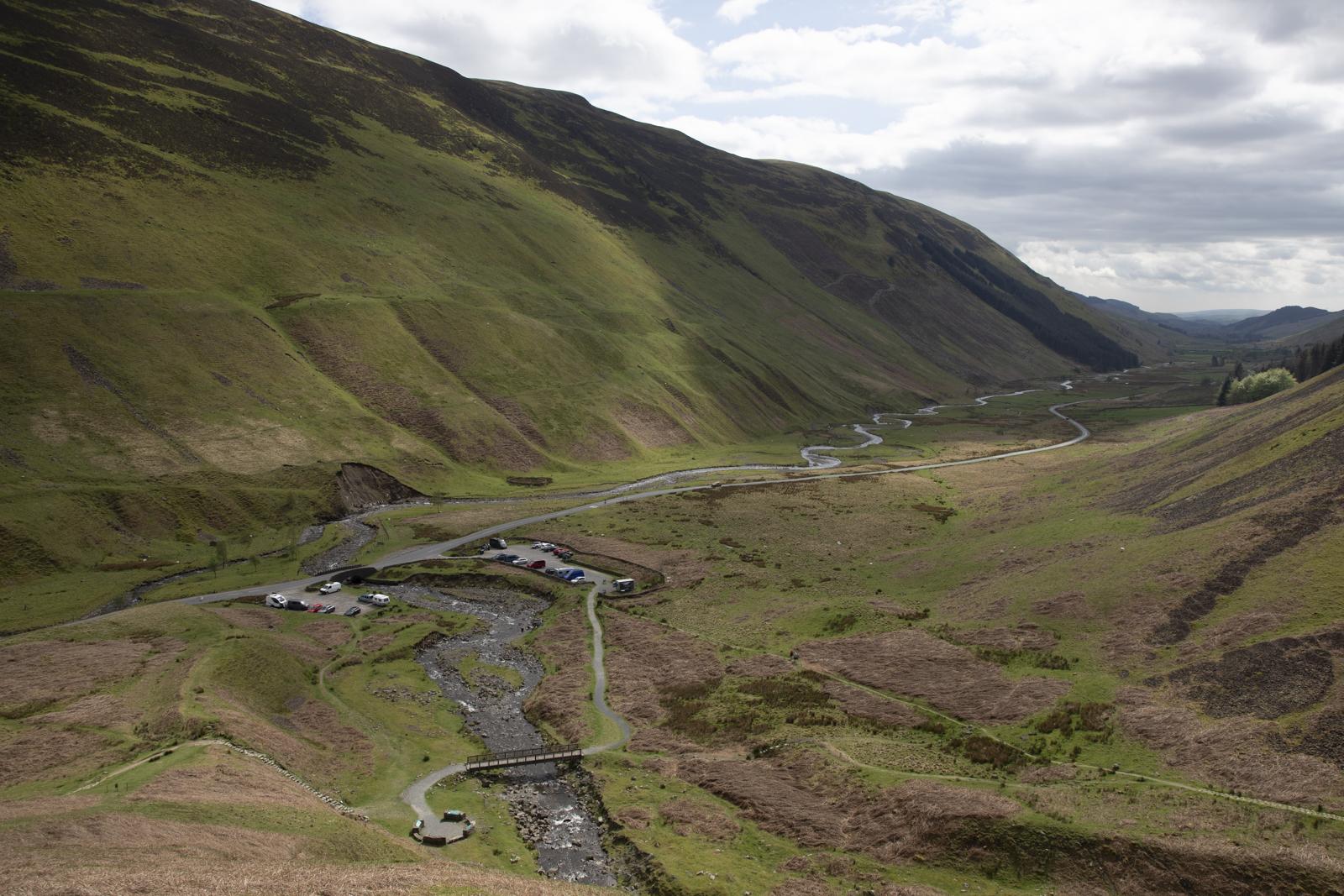
looking down to Moffat Water Valley and NTS carpark and viewing point
John Robson
May 8, 2024
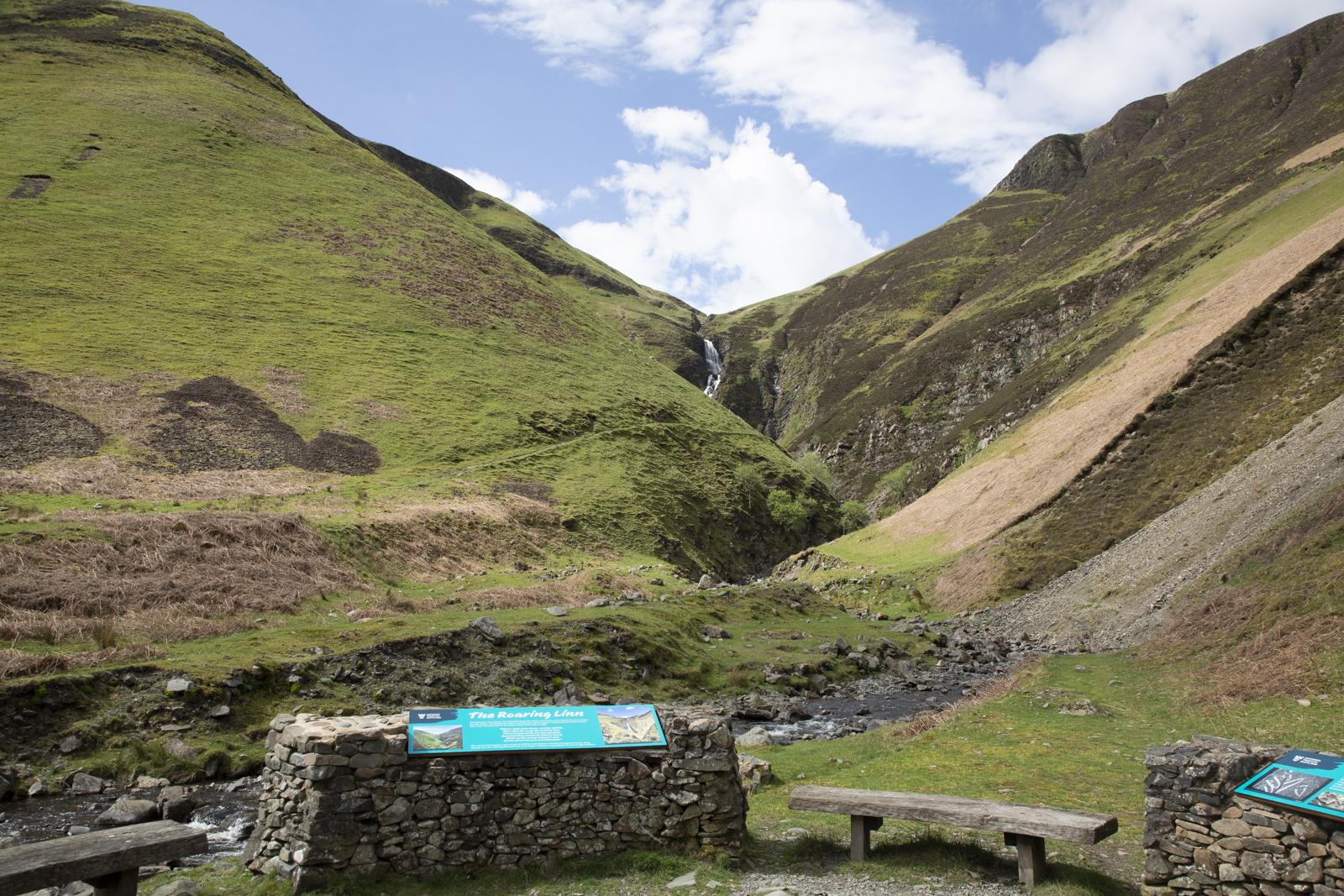
Grey Mare's Tail from carpark viewing point
John Robson
May 8, 2024
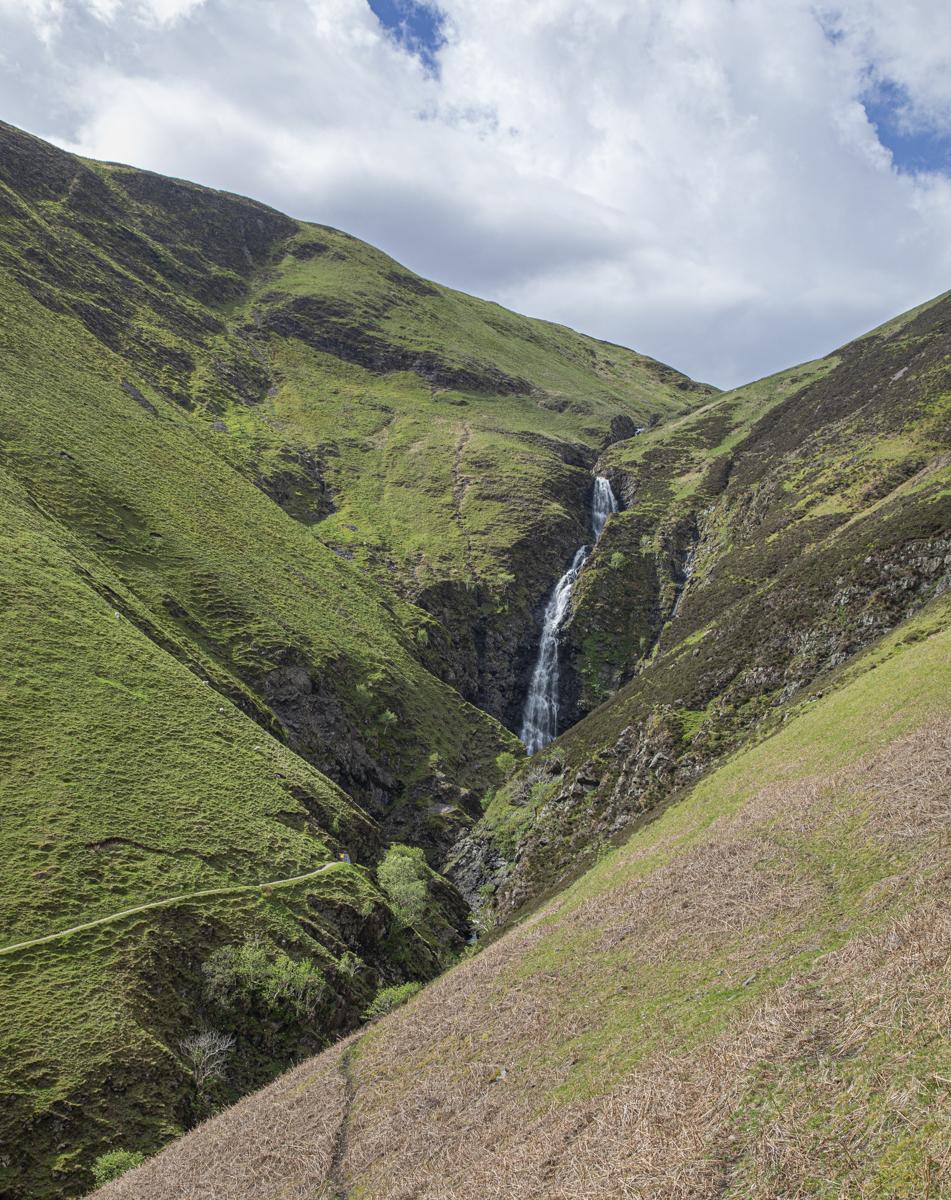
Grey Mare's Tail from the rhs path to Loch Skeen, looking down to the lhs path and viewing point.
John Robson
May 8, 2024
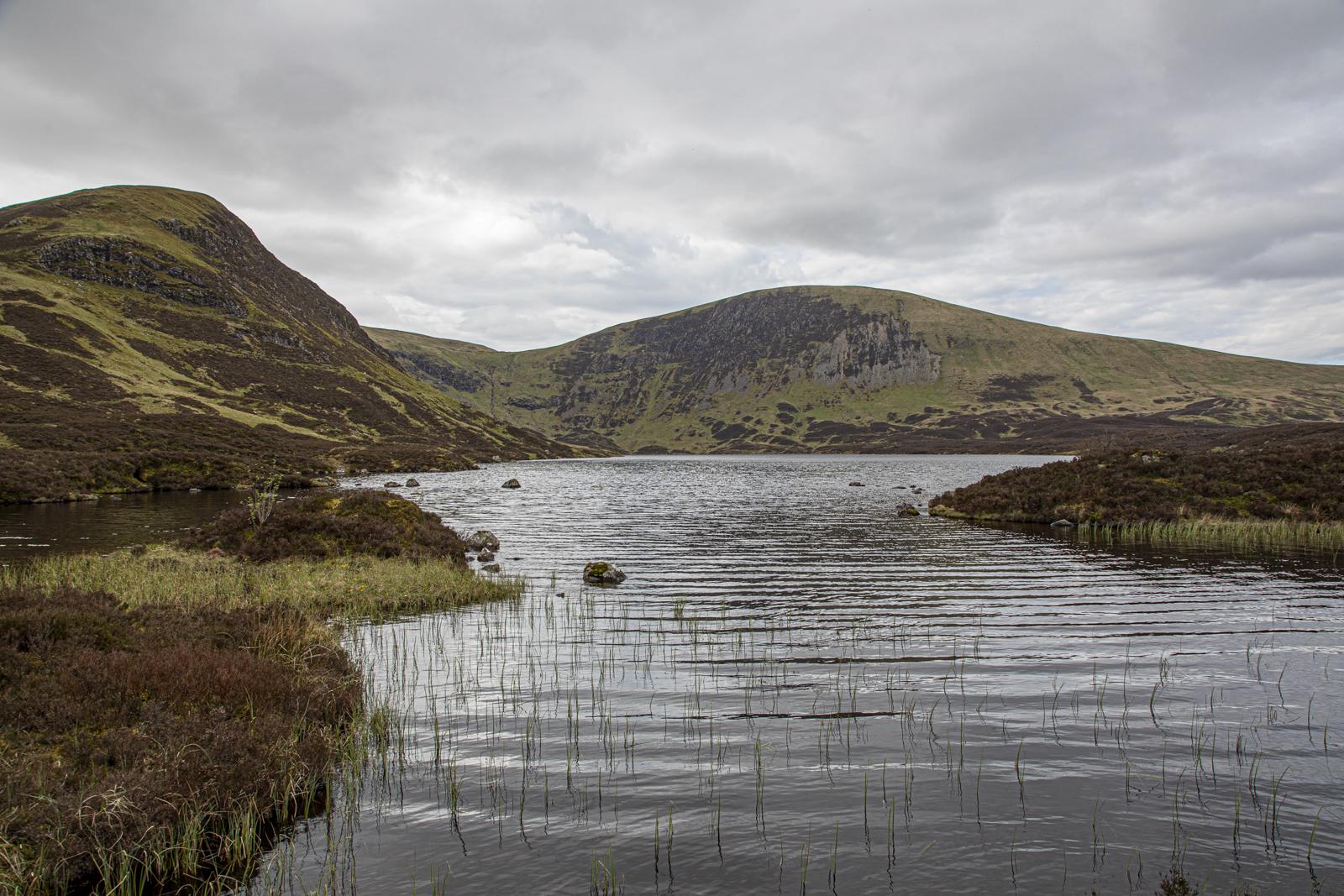
Loch Skeen, looking North West toward Mid Craig and Lochcraig Head.
John Robson
May 8, 2024

Looking East across Loch Skeen from Mid Craig flank. The low ridge of 'The Causey' - a terminal or lateral moraine feature is visible beyond the East bank of the Loch.
Hummocky moraines are seen on the rhs of the photo.
John Robson
May 8, 2024
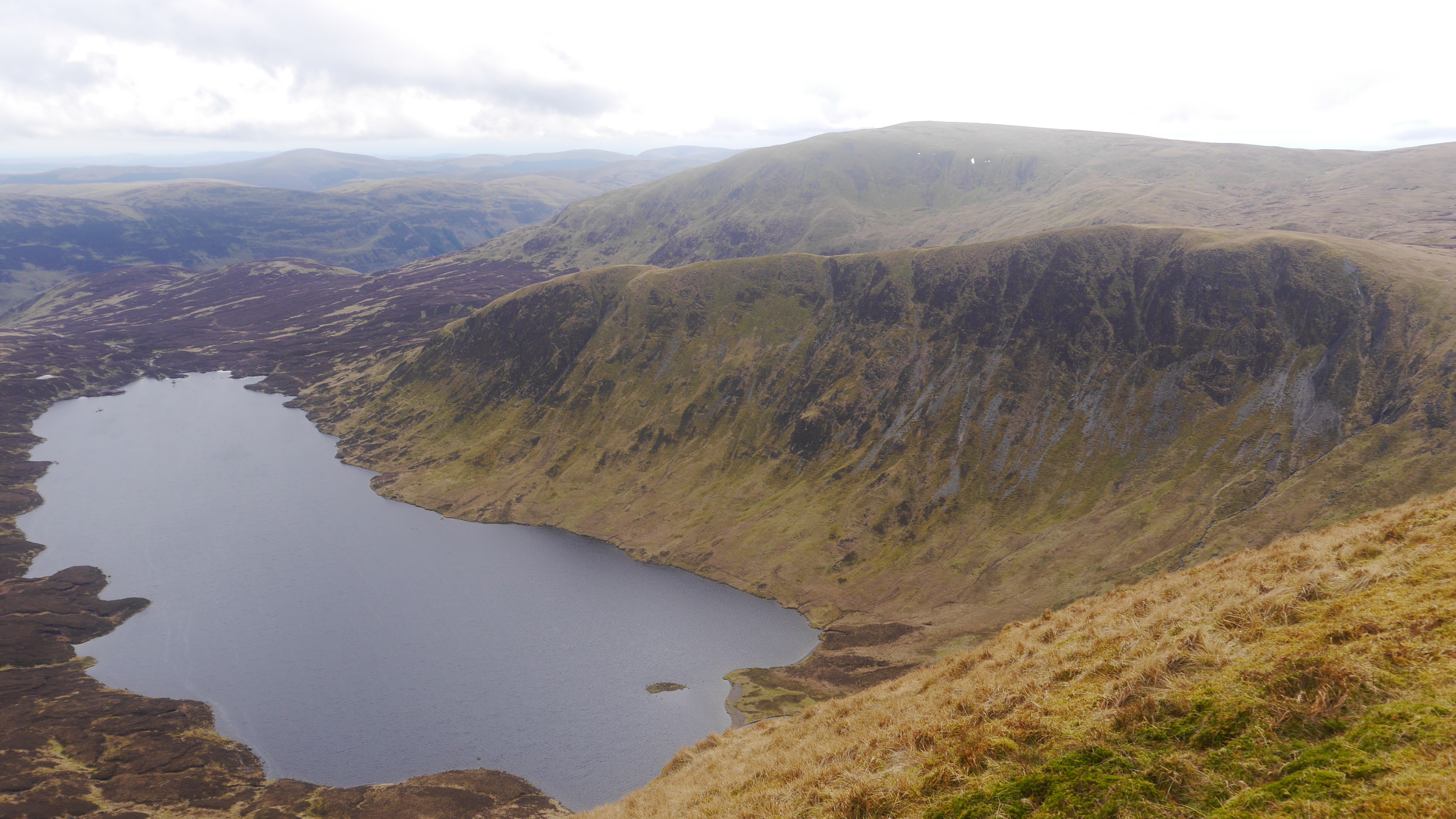
Loch Skene and the corrie headwall from Lochcraig Head.
Daniel Burgess
March 16, 2024
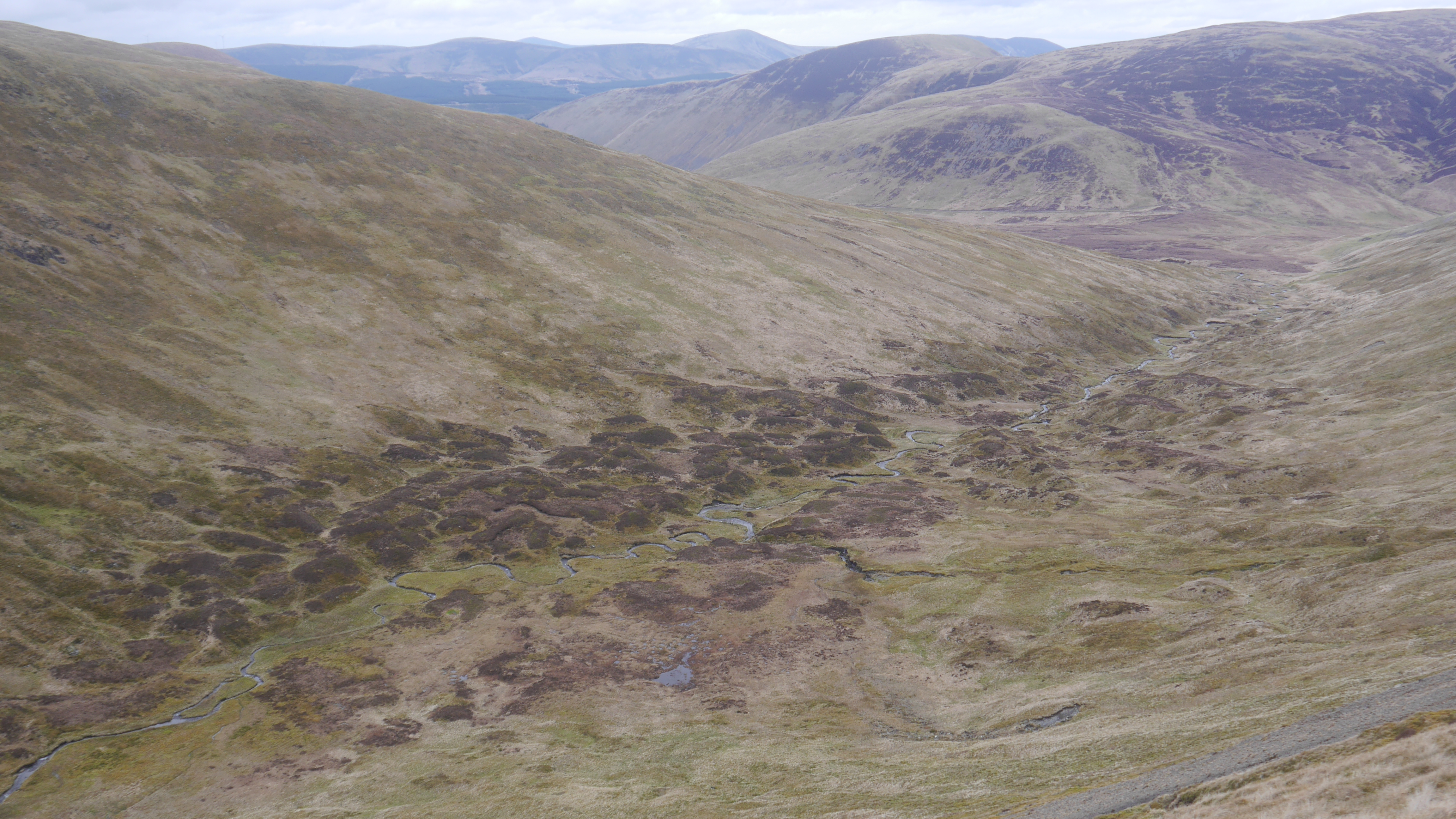
Glacial features to the north of the site, in the upper Talla Valley.
Daniel Burgess
March 16, 2024